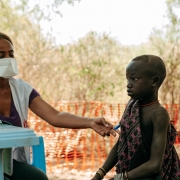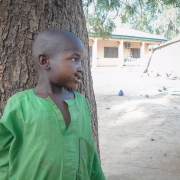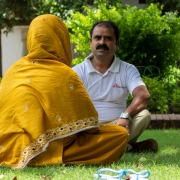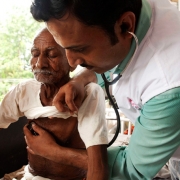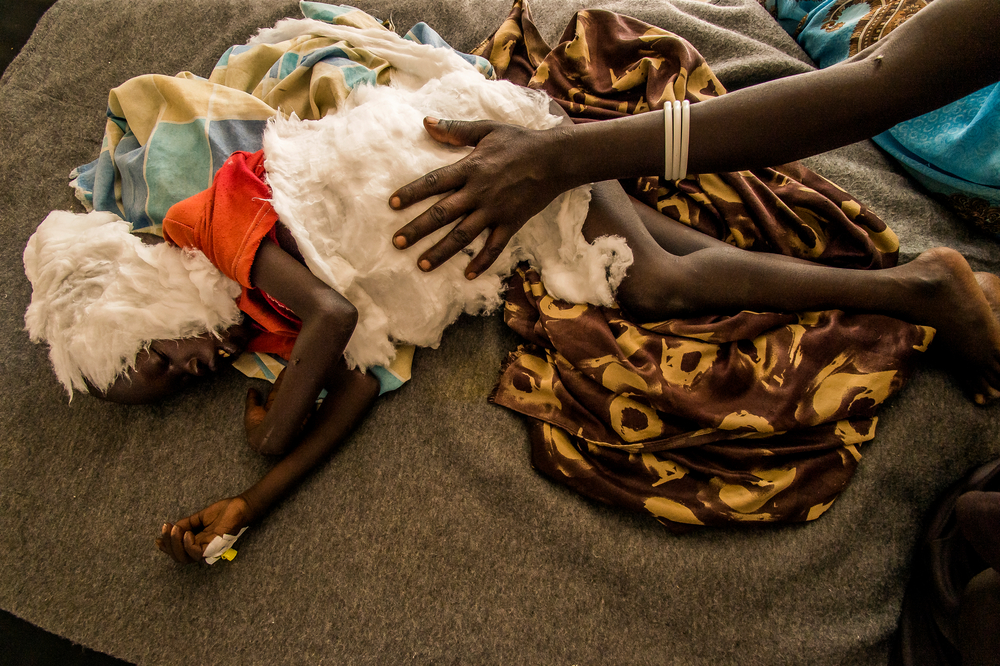
사진: 가투알레 추올(6세)은 '칼라-아자르' 혹은 '내장 리슈만편모충증'이라고 불리는 흑열병 환자였다. 이 기생충병은 말라리아에 이어 전 세계에서 두 번째로 치명적인 병으로 매년 약 50만 명의 목숨을 앗아간다. ⓒFrederic NOY/COSMOS
흑열병 (내장 리슈마니아증)
흑열병(Kala azar, 힌두어로 ‘흑열’)은 지중해 연안을 제외한 고소득 국가에서는 거의 알려져 있지 않은 병입니다. 흑열병은 ‘모래파리’라고 불리는 흡혈 파리를 통해 전염되는 기생충병으로 세계 76개국에서 풍토병으로 나타납니다. 한 해 평균 20만~40만 명이 감염되는 것으로 추산되는데, 그중 90%가 방글라데시, 인도, 에티오피아, 남수단, 수단, 브라질 등에서 일어납니다. 흑열병에 감염되면 고열, 체중 감소, 간장 및 비장 비대증, 빈혈, 면역 결핍 등이 나타납니다. 치료를 받지 않는 경우, 흑열병은 치명적인 결과를 낳습니다.
아시아에서는 신속 진단 검사로 흑열병 감염 여부를 알 수 있습니다. 하지만 아프리카에서는 이 검사를 사용하기가 어렵습니다. 진단 검사를 위해서는 비장, 골수, 림프절에서 추출한 샘플을 현미경으로 살펴봐야 하기 때문입니다. 이는 까다로운 검사인데 저소득 국가들에서는 이에 필요한 자원을 구하기가 어렵습니다.
흑열병 치료법은 최근 몇 년간 진화를 거듭해 왔습니다. 아시아에서는 ‘리포솜 암포테리신 B’를 1차 치료제로 사용하는데, 이 약을 단독으로 사용하기도 하고 치료의 일부로 쓰기도 합니다. 보다 안전한 이 치료제는 기존 치료법보다 치료 기간도 짧습니다. 문제는 이 약을 쓰려면 정맥 주사를 이용해야 하는데, 현지 진료소에서 이를 사용하기란 쉽지 않다는 것입니다. 이에 따라 아프리카에서는 5가 안티몬과 파로모마이신을 혼합하는 것이 최선의 방법이지만, 이 치료제는 독성도 있고 고통스러운 주사도 여러 번 맞아야 합니다. 현재 보다 간편한 치료 방법을 연구하고 있는데 곧 좋은 소식이 나오길 기대해 봅니다.
흑열병과 HIV에 동시에 감염되는 경우 큰 문제가 생깁니다. 두 병이 서로에게 악영향을 끼쳐 면역 체계를 공격해 이를 악화시키기 때문입니다.
2016년, 국경없는의사회는 5800명의 흑열병 환자들을 치료했습니다.
Kala azar (visceral leishmaniasis)
Largely unknown in high-income countries (although it is present in the Mediterranean basin), kala azar – Hindi for ‘black fever’ – is a tropical, parasitic disease transmitted through bites from certain types of sandfly. It is endemic in 76 countries, and of the estimated 200,000–400,000 annual cases, 90 per cent occur in Bangladesh, India, Ethiopia, South Sudan, Sudan, and Brazil. Kala azar is characterised by fever, weight loss, enlargement of the liver and spleen, anaemia, and immune-system deficiencies. Without treatment, kala azar is almost always fatal.
In Asia, rapid diagnostic tests can be used for diagnosis of the disease. However, these tests are not sensitive enough for use in Africa, where diagnosis often requires microscopic examination of samples taken from the spleen, bone marrow or lymph nodes. These are invasive and difficult procedures requiring resources that are not readily available in developing countries.
Treatment options for kala azar have evolved during recent years. Liposomal amphotericin B is becoming the primary treatment in Asia, either alone or as part of a combination therapy. This is safer and involves a shorter course of treatment than previously used medication. However, it requires intravenous administration, which remains an obstacle to its use in local clinics. In Africa, the best available treatment is still a combination of pentavalent antimonials and paromomycin, which is toxic and requires a number of painful injections. Research into a simpler treatment is underway and it is hoped it will soon be available.
Co-infection of kala azar and HIV is a major challenge, as the diseases influence each other in a vicious spiral as they attack and weaken the immune system.
MSF treated 5,800 patients for kala azar in 2016.
